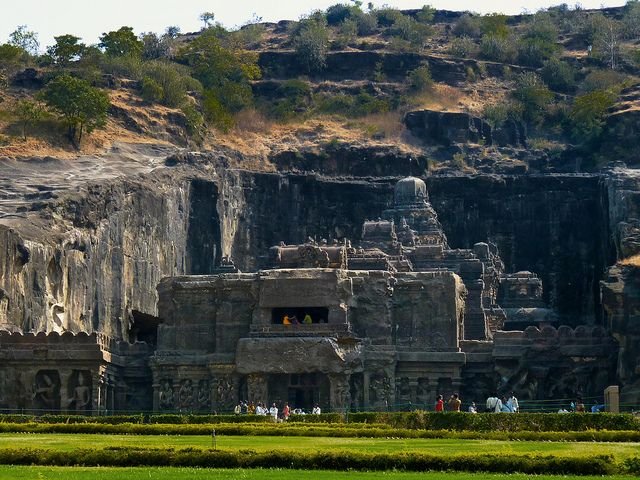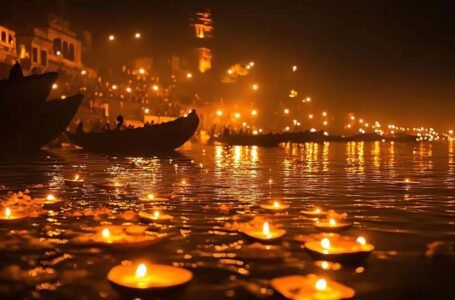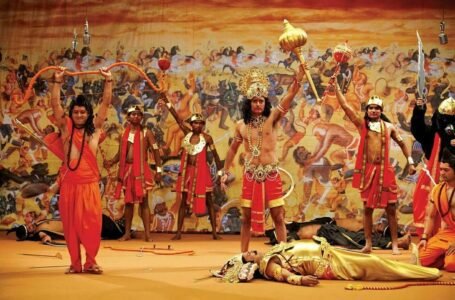Exploring the Ancient Wonder: A Deep Dive into the Ellora Caves

The Ellora Caves, a UNESCO World Heritage Site located in Aurangabad, Maharashtra, India, represent one of the largest and most impressive rock-cut temple complexes in the world. Spanning a period from 600 to 1000 AD, these caves are a fusion of Hindu, Buddhist, and Jain religious architecture and art, offering a rare glimpse into the religious harmony that once prevailed in ancient India. The site is renowned for its extraordinary rock-cut architecture, including the Kailash Temple, a monolithic structure carved out of a single basalt rock, and for its detailed sculptures that depict the major religious deities and mythologies. The Ellora Caves have become a significant cultural and tourist attraction, attracting visitors from around the world to experience their religious and architectural splendor.
History of the Ellora Caves
The history of the Ellora Caves traces back to the period between the 6th and 10th centuries, with the majority of the temples being carved during the reigns of the Rashtrakuta and Yadava dynasties. The caves are located in the Charanandri Hills, a region known for its basalt rock formations, which were formed through ancient volcanic activity. These volcanic formations, which resulted in vertical rock faces, allowed for the relatively easier excavation of intricate carvings and the construction of temple complexes.
The construction of these caves began in the 6th century, with the Hindu caves being the earliest structures. These caves were followed by the Buddhist and Jain caves, illustrating the religious diversity of the region during that period. The Hindu caves were primarily constructed during the Kalachuri period (mid-6th to late 8th century), while the Buddhist caves were built between the 5th and 8th centuries. The Jain caves, which were the last to be carved, were constructed in the 9th and early 10th centuries.
The Rashtrakuta dynasty (753-982 AD) played a key role in the construction of the majority of the Hindu and Buddhist caves. The Yadava dynasty (1187-1317 AD), which ruled after the Rashtrakutas, was responsible for the Jain caves. The funding for the construction of these caves came from a variety of sources, including royal patronage, the contributions of traders, and the wealth of the local elite. The site also served as a stop for pilgrims on their way to other religious centers, emphasizing its dual role as both a sacred space and a commercial hub.
Architecture of the Ellora Caves
The architecture of the Ellora Caves is a testament to the advanced engineering and artistic skills of the builders. The site consists of over 100 caves, spread over a 2-kilometer stretch, with 34 caves open to the public. The caves are divided into three main religious groups: 17 Hindu caves (Caves 13-29), 12 Buddhist caves (Caves 1-12), and 5 Jain caves (Caves 30-34). Each group represents the beliefs and iconography of their respective religions and was designed to serve as temples, monasteries, or resting places for pilgrims.
The most famous and significant cave at Ellora is Cave 16, which houses the Kailash Temple, the world’s largest single monolithic rock excavation. This temple is dedicated to Lord Shiva and is shaped like a chariot drawn by elephants, representing the intricate relationship between art, religion, and culture. The temple features intricate carvings of Hindu deities and relief panels depicting episodes from the two great Hindu epics, the Ramayana and the Mahabharata. The Kailash Temple is considered an architectural marvel due to the complexity of its design, which includes detailed sculptures and expansive courtyards, all carved from a single piece of rock.
The Buddhist caves at Ellora are primarily viharas (monasteries) and chaityas (prayer halls), with the most notable examples being Caves 5, 10, 11, and 12. These caves are designed to accommodate the monastic lifestyle, featuring living quarters, prayer halls, and shrines. The carvings within the Buddhist caves include depictions of the Buddha, bodhisattvas, and saints. One of the most remarkable Buddhist caves is Cave 10, also known as the Vīśvakarmā Cave, which is a large prayer hall with intricate sculptures.
The Jain caves, though smaller in scale compared to the Hindu and Buddhist caves, are equally significant. These caves feature highly detailed carvings of the twenty-four Tirthankaras, the spiritual leaders in Jainism, as well as depictions of gods, goddesses, and other deities. The architecture of the Jain caves includes pillared verandas, symmetric mandapas (halls), and places for worship. The carvings in these caves reflect the core tenets of Jainism, including the emphasis on non-violence, truth, and asceticism.
The caves at Ellora were once covered with a layer of lime plaster and painted with vibrant colors. Though much of the paint has faded over the centuries, some remnants of the original plaster and color still survive, adding to the aesthetic value of the site.
Deities and Religious Symbolism
The Ellora Caves are home to numerous sculptures and carvings that depict the deities and religious narratives of Hinduism, Buddhism, and Jainism. The religious iconography found within the caves is a visual representation of the myths, legends, and philosophies that shaped the religious practices of the time.
In the Hindu caves, the deities of the Hindu pantheon are prominently featured, with Shiva being the central figure in the Kailash Temple. Other important deities such as Vishnu, Brahma, and various incarnations of these gods are depicted in the carvings. The reliefs also include scenes from the Ramayana and Mahabharata, showcasing the significance of these epics in Hindu thought and culture.
The Buddhist caves primarily focus on the life and teachings of the Buddha. Carvings of the Buddha, bodhisattvas, and scenes from the Buddha’s life, including his enlightenment and nirvana, can be found in these caves. These sculptures reflect the Buddhist emphasis on compassion, wisdom, and the pursuit of enlightenment. In some caves, the stone carvings are made to resemble wood, highlighting the artistic innovation of the sculptors.
The Jain caves emphasize the importance of the twenty-four Tirthankaras, who are revered as spiritual guides in Jainism. The carvings in these caves depict the Tirthankaras in various poses, as well as other deities, yakshas (nature deities), and yakshis (female nature deities). These sculptures convey the Jain philosophy of asceticism, non-violence, and liberation from the cycle of birth and rebirth.
Conclusion
The Ellora Caves stand as a monumental achievement in the history of Indian art and architecture. They provide a fascinating insight into the religious and cultural life of ancient India, showcasing the harmony that existed between Hinduism, Buddhism, and Jainism. The caves not only serve as a testament to the skill of the craftsmen who created them but also reflect the spiritual and philosophical ideals of the time. Today, the Ellora Caves remain an important cultural heritage site and a major tourist attraction, continuing to inspire awe and admiration for their beauty, complexity, and historical significance. The site’s inclusion in the UNESCO World Heritage List ensures its preservation for future generations to appreciate and learn from.


